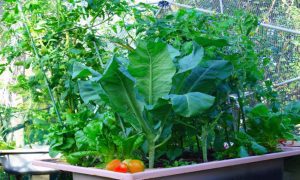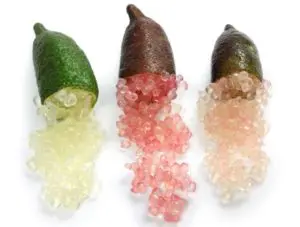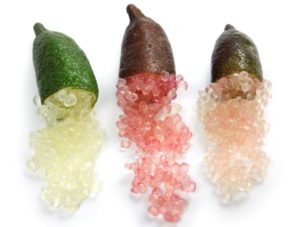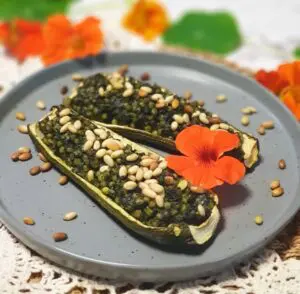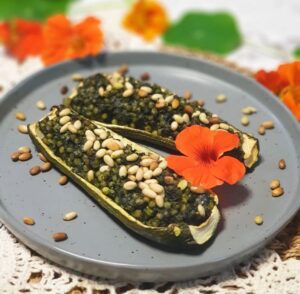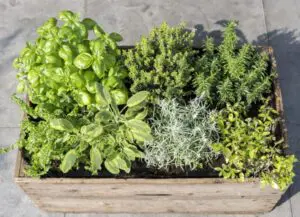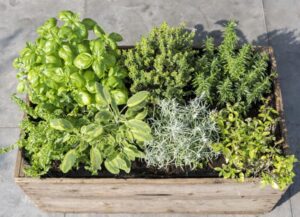A warning first about this particular tomato plant – grow it as a supplementary tomato not as the main staple as results can be mixed from season to season with this cheeky giant. Some seasons it grows perfectly and others it really struggles without any obvious reasons why… I suspect it's a little fickle when it comes to temperature changes.
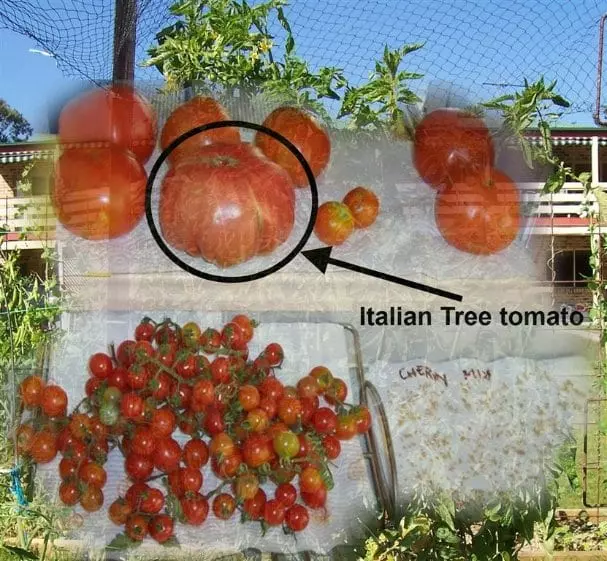
As usual, I will summarise by giving the tomato variety a final rating score out of 10 points by averaging my rating scores for the tomato on the following criteria:
-
Size of Fruit vs Productivity
-
Taste & Meatiness (texture)
-
Disease and Pest Resistance
-
Growth
-
X-Factor
So, without getting wrapped around the axles, let's get started!
Characteristics
# 3 in our tomato series is the Italian Tree Tomato. This plant is big and beautiful with large leaves, thick stems, a sprawling growth habit, and huge fruit.
The Italian Tree tomato is a large indeterminate plant (continues to grow-on kind-of like a vine) with a thick leader and many long branching off-stems; therefore, it will need staking or support. Taking 3 months to mature, this is definitely the largest tomato plant I have grown. An heirloom variety so it's true-to-type if you wish to keep the seeds for re-planting.
The fruit has a slightly pleated form with dark pink to red coloured skin when ripe with a similar coloured flesh with a fairly meaty texture when sliced.
Size of the fruit is usually large to a very large 4 – 6 inches across with good feeding and the right season.
Productivity is ok but I have found for a large plant cropping is sometimes disappointing.
Special Growing Tips and Observations
Obtaining the seed through heirloom seed providers would be the best option if you wanted an authentic plant and because it is pretty popular finding the seeds isn't hard (I got mine off eBay).
Soil preparation and planting is no different than any other tomato plant:
-
Does best in well-draining soil.
-
Dig-in some compost and manure for extra food.
-
Throw around and dig-in a few handfuls of dolomite/lime (for extra calcium and to help prevent blossom end rot).
-
Plant seedlings quite deep up to its first set of leaves (to promote more root growth).
-
If direct sowing with seed, sow two or three per station, keep soil moist, then thin out to one plant.
-
Feed young plant with some seaweed solution every few weeks.
-
Boost feed with some potassium or trace elements at flowering or early fruit set.
-
Mulch the soil around base of plant.
Extra feed like pre-dug manure and side dressings of blood and bone or potassium is essential for this big boy whilst it's growing but I wouldn't overdo the nitrogen as I feel this plant likes to grow more than fruit.
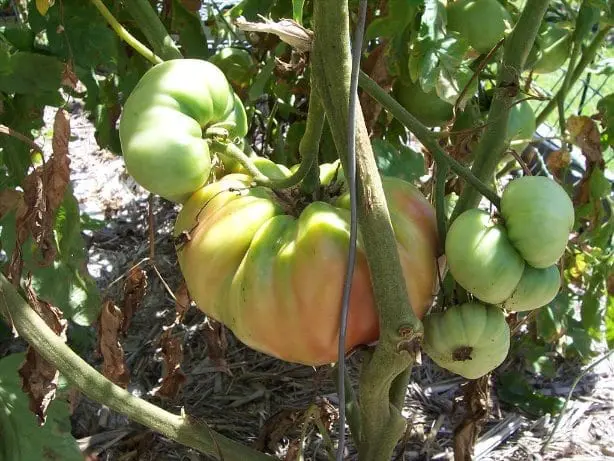
Italian Tree Tomatoes are not the easiest tomato to grow
In a subtropical climate, I've found the Italian Tree tomato difficult to grow because (like some other tomato varieties) it doesn't set fruit too well through winter (which is the best time for growing larger tomato varieties in my region). The confusing part about this plant is how well it grows through winter here with it probably being the most vigorous grower I've planted (besides the cherry type). However, I have had plants flower well and grow way over 6 feet for three or more months without any fruit at all.
Then by the time spring hits, the plant is quite susceptible to common diseases so the fruit starts to finally grow but the plant starts to lose puff. The best hope for growing this plant successfully in the subtropics is by starting it mid-winter and hope for a dry spring. And for cooler regions, I'd personally ensure the Italian Tree tomato is timed to flower in the hottest parts of the year and it should grow wonderfully.
Actually, I have read where this plant, in the right conditions, can be cut back to ground and mulched through winter to regrow again next season – it's probably a myth but it is interesting.
Fruit fly is a problem where I live and this tomato cops it big time so bagging, netting or spraying or trapping is required for this variety in fruit fly prone areas or the fruit will be lost.
Taste and Best Uses
The Italian Tree tomato is a great eater with a low acid and mild flavour I really like it. This tomato passes my grilled toasties test with flying colours and also makes a good sauce (so it should considering its name).
Again it's another tomato all tomato growers need to try. The size of the plant alone is worth seeing and if you can get it to fruit well, jeepers, the fruit size will make your neighbours eyes pop out when they peek over your fence-line.

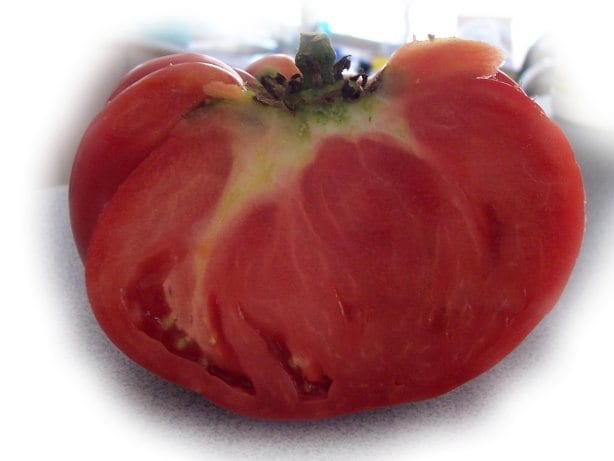
Final Say and Score
The Italian Tree tomato may be pretentious but it hasn't become a popular heirloom tomato variety for no reason. The difficulty and confusing fruiting habits is the most disappointing characteristic about this plant (for me anyway).
However, the size of the plant is a definite winner for tomato connoisseurs and its fruit is as good as any. Coupled with high x-factor due to its size and extra kudos for being an heirloom variety, this tomato no doubt scores well.
I like this variety of tomato because of its plant and leaf size, good taste, and fruit size.
My Scores:
-
Size of Fruit vs Productivity – 6
-
Taste & Meatiness (texture) – 9
-
Disease and Pest Resistance – 6
-
Growth – 10
-
X-Factor – 8
Full score is 39 points with an overall average total of a 7.8 – SSM Tomato Rating.
And there you have it for the Italian Tree tomato, the 3rd to be showcased in our tomato series, and one you won't find in any supermarket so to see your neighbours eyes pop as they shout BELLA, you'll need to grow it at home.
Feel free to use the comment section below and have your say (no email is required).
You can find more tomato reviews in the tomato category.
Thanks for reading and thanks for your support,
Look, and see the Earth through her eyes
Mark Valencia – Editor SSM




